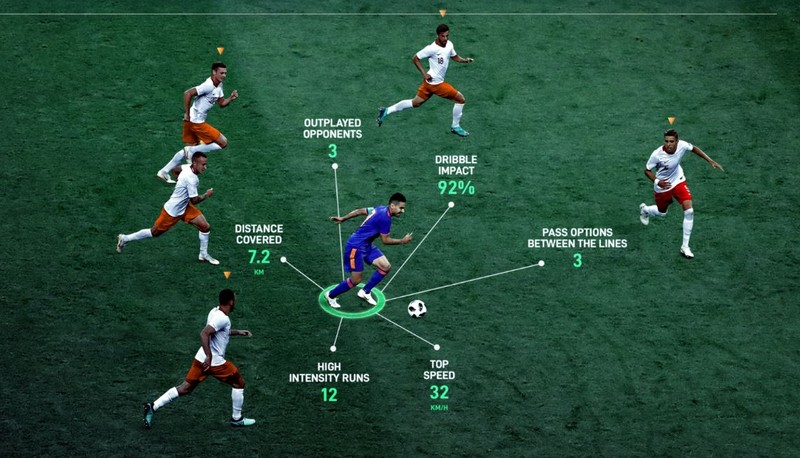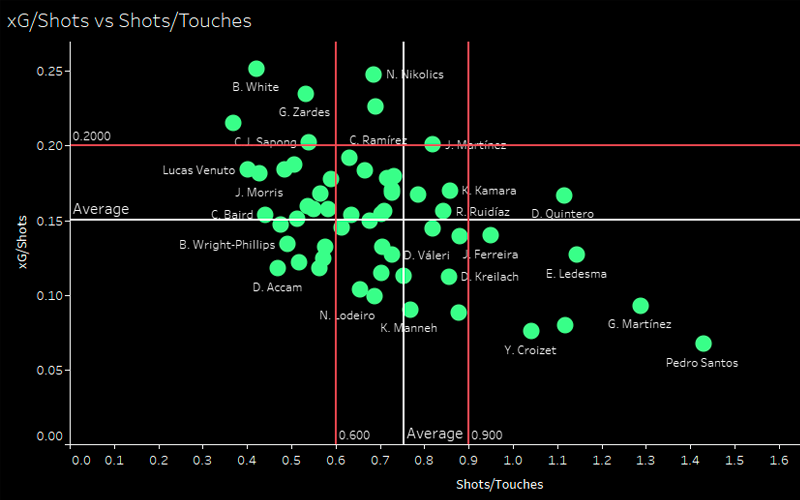Over the past decade, the sports world has witnessed a dramatic shift in the way teams and athletes approach competition. The rise of data-driven decision-making has revolutionized how sports teams operate, with Major League Soccer (MLS) being no exception.
In this article, we’ll unravel the impact of analytics on MLS and explore how it has transformed the game’s evolution.
The Emergence of Analytics in Soccer
The use of analytics in soccer can be traced back to the early 2000s, with English club Arsenal FC being one of the first teams to adopt data-driven strategies. However, it wasn’t until the 2010s that analytics began to take center stage in MLS. As teams began to appreciate the value of data in informing their decisions, they started investing in technology and hiring dedicated analysts to help them gain a competitive edge.
One of the pioneers in bringing analytics to MLS was Sporting Kansas City. They embraced data-driven approaches, using GPS tracking devices and other technologies to monitor players’ performances and inform tactical decisions. This early adoption of analytics enabled Sporting Kansas City to achieve considerable success, including winning the 2013 MLS Cup.
The Power of Data

The rapid rise of analytics in MLS can be attributed to the vast amount of data available and the insights that can be gleaned from it. Data is collected from various sources, including player tracking systems, video analysis tools, and in-depth statistical databases. With such a wealth of information at their disposal, teams can better understand their players’ strengths and weaknesses and develop strategies to exploit the opposition.
Physical Performance
One key area where analytics has made a significant impact is in the monitoring of players’ physical performance. GPS tracking devices, heart rate monitors, and other wearable technology provide teams with detailed information about how their players perform during games and training sessions. This data allows coaches and sports scientists to tailor training programs, manage player workloads, and prevent injuries.
For example, Toronto FC utilizes Catapult Sports’ GPS technology to track players’ movements, speeds, and accelerations during games. By analyzing this data, the team can identify areas for improvement, see each player’s work rate, and make informed decisions about player rotations and substitutions.
Tactical Analysis
Data-driven tactical analysis has become an essential part of MLS, as teams increasingly rely on statistics to inform their game plans. Advanced metrics such as expected goals (xG), expected assists (xA), and player radars provide coaches with insights into individual and team performances, enabling them to identify trends and patterns in their opponents’ play.
The Portland Timbers, for instance, use Wyscout, a comprehensive video analysis platform, to analyze opponents’ matches and develop strategies to counter their strengths. By leveraging data, the Timbers have consistently been a top contender in the Western Conference, with a 2015 MLS Cup to their name.
Player Recruitment and Development
In the realm of player recruitment and development, analytics has proven to be a game-changer. Clubs are now using data to identify promising talent and assess potential signings. By evaluating a player’s statistics and comparing them to league-wide benchmarks, teams can make more informed decisions about which players to pursue and at what price.
The Seattle Sounders have been particularly successful in using analytics to identify and develop talent. Their data-driven approach has led to the discovery of several standout players, such as Raúl Ruidíaz and Cristian Roldan, who have played crucial roles in the team’s success.
The Impact of Analytics on Soccer’s Evolution

The widespread adoption of analytics in MLS has led to several notable changes in the way the game is played and managed. Let’s delve into some of these transformations.
More Efficient and Precise Tactics
Coaches can now devise more efficient and precise tactics on a rolling basis, using up to date information collected by data analysis tools. This has led to an increased emphasis on possession-based play, high-pressing systems, and exploiting opposition weaknesses through targeted attacks.
Teams like Atlanta United and LAFC have excelled in recent years due to their intelligent tactical approaches, informed by in-depth data analysis. However, it also means that coaches are developing their tactical approach at a faster rate, because their successful tactics are quickly discovered by other teams who then use their own data to try and outplay them. This creates something of a never ending cat and mouse game, with each team constantly adapting their approach.
Improved Player Fitness
As teams continue to invest in sports science and analytics, players are benefiting from improved fitness and injury prevention. By monitoring players’ physical data, coaches can better manage workloads and develop individualized training programs to optimize performance. They can also factor in past injuries, to get a good idea of how much might be too much for each individual player.
As a result, players are enjoying longer and healthier careers, which in turn raises the overall level of competition in MLS. This is obviously beneficial for the players too, because they are not held back by injuries as often, and their wellbeing is looked after.
There is also a knock on effect for the clubs here, because a player’s stock is going to be higher if they are less injury prone, or haven’t been injured for many years. It helps them protect the value of their asset.
Enhanced Fan Engagement
Analytics has not only impacted the teams and players but has also transformed the way fans engage with the sport. Advanced statistics and data visualizations offer fans a deeper understanding of the game and allow them to appreciate the nuances of player performances.
Websites like American Soccer Analysis and platforms such as Opta have made it easier for fans to access and interpret soccer data, fostering a more informed and passionate fanbase.
You can see this in the fan forums and Youtube videos that super fans post online, discussing specific data points such as how much running certain players do, whether or not they track back, how many passes they receive or complete. People enjoy this sort of analysis, and even use it to search for dream players they think could improve their team.
Competitive Balance
The rise of analytics in MLS has contributed to a more level playing field too, as teams of varying budgets can use data to gain a competitive edge… if they use it wisely.
Smaller-market teams like Sporting Kansas City and the Portland Timbers have been able to compete with big-spending clubs by leveraging data-driven insights. This competitive balance has helped MLS grow in popularity and attract new fans, as well as foreign players and coaches looking for a new challenge.
It is another weapon in the arsenal, one that money can’t buy the best of. Anyone with proper understanding of the game can look at the data, and use it to help them make decisions on the pitch.
Challenges and the Future of Analytics in MLS

Despite the significant strides made in incorporating analytics into MLS, there are still challenges to overcome. Some of the more old fashioned people in the game remain skeptical of the value of data-driven approaches, despite their obvious value. Others are all for it, but struggle to implement analytics as effectively as the most affluent teams due to limited resources or a lack of expertise.
Additionally, soccer is an inherently complex and fluid sport, making it difficult to quantify every aspect of the game. As analytics continues to advance, researchers and practitioners will need to develop more sophisticated metrics and models to better capture the intricacies of soccer.
Even then, can you run a soccer club with data alone? I don’t think so. There will always be room for the human element, real life experience and gut feelings, so teams need to find a balance between being slaves to data, and under utilising it.
In the coming years, we can expect to see further developments in analytics, such as the integration of artificial intelligence and machine learning techniques to better predict player performance and game outcomes. Moreover, as MLS continues to expand, there will be more opportunities for teams to innovate and adopt cutting-edge analytical tools and strategies.

